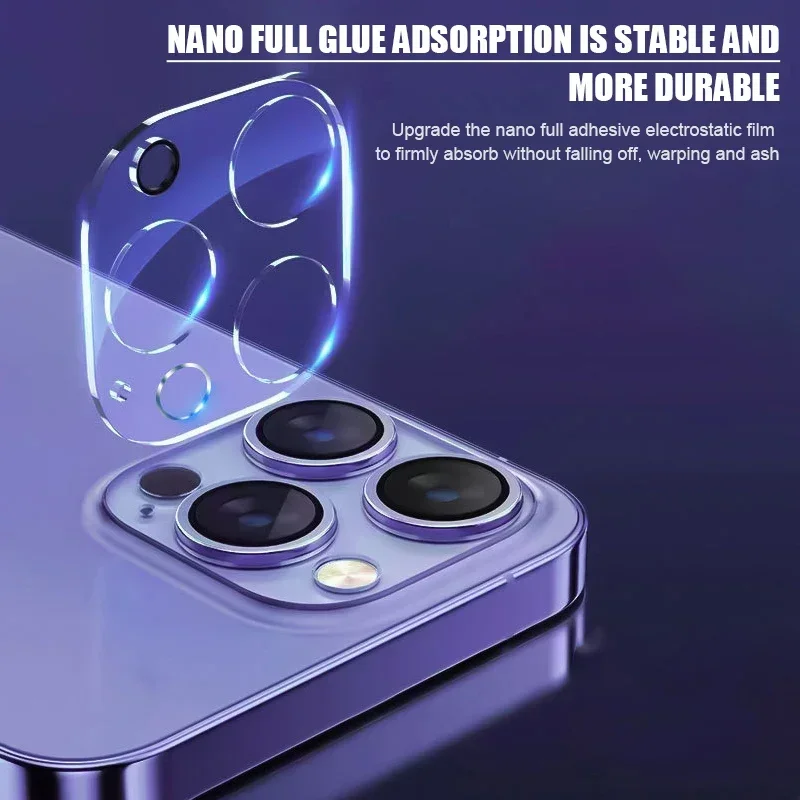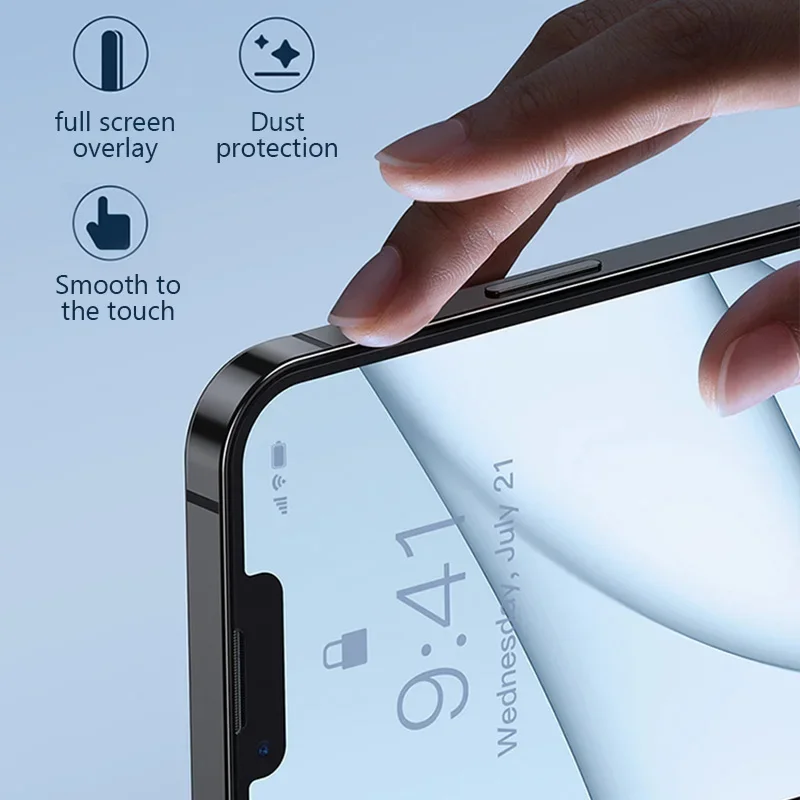Introduction to Screen Protector Maintenance
Protecting your device’s screen is critical, and screen protectors play a key role. They shield your screen from scratches, cracks, and impact damage. Clean screen protectors can ensure they perform well for longer. In this section, we will guide you on how to clean screen protectors effectively.
Regular maintenance not only keeps your screen protector clear and smudge-free but also maximizes its lifespan and touch sensitivity. Whether you use a plastic film or a tempered glass protector, knowing the right cleaning techniques is essential. We’ll cover basic upkeep tips, common mistakes to avoid, and how to handle the adhesive side without causing damage.
Stay tuned to learn how to use household products safely for cleaning and understand when it’s time to replace your screen protector. With the right knowledge, you can ensure that your device’s screen remains in top condition.

The Don’ts of Tempered Glass Cleaning
When cleaning your tempered glass screen protector, some actions can do more harm than good. Avoid these common mistakes to ensure you do not damage your screen or screen protector:
- Never use harsh chemicals. Products like Windex or alcohol can strip away the oleophobic coating, leaving your screen more prone to marks.
- Steer clear of abrasive materials. Rough cloths, paper towels, and sponges can scratch the screen protector. Always opt for a soft, lint-free cloth.
- Don’t scrub vigorously. A gentle wipe is all you need. Scrubbing too hard can cause cracks or weaken the screen protector.
- Avoid using excess liquid. Too much water or cleaning solution can seep into your device, causing damage.
Remember, the aim is to preserve both the appearance and functionality of your tempered glass screen protector. By avoiding these don’ts, your screen protector will continue to protect your device effectively while maintaining its clarity and responsiveness.
A Step-by-Step Approach to Cleaning Your Screen Protector
To keep your screen protector in top shape, follow these simple steps:
- Turn Off Your Device: Before you start, make sure your phone or tablet is off. This will prevent accidental inputs and make it easier to see dirt.
- Choose the Right Cloth: Use a microfiber or lint-free cloth. These materials won’t scratch your screen protector.
- Dry Wipe: Gently wipe the screen with the cloth to remove dust and light smudges.
- Prepare a Cleaning Solution: If needed, mix equal parts water and dish soap. This solution is gentle yet effective.
- Apply the Solution: Lightly dampen the cloth with your mixture. Avoid soaking the protector.
- Wipe in a Circle: Clean the screen protector in circular motions. This technique helps lift smudges and dirt.
- Dry the Protector: Use a clean cloth to remove any leftover dampness.
By following this approach, you can ensure your screen protector remains clear without risking damage.

Cleaning the Adhesive Side of Your Tempered Glass
Cleaning the adhesive side of your tempered glass screen protector is essential. It maintains the protector’s strong grip and clear visibility. This section covers the steps to properly clean the sticky side without compromising its adhesive quality.
- Start with the Right Tools: Gather a microfiber cloth and isopropyl alcohol (70% or higher).
- Power Off Your Device: Ensure your phone or tablet is off before you start.
- Gently Peel Off the Protector: Slowly remove the screen protector to avoid damage.
- Brush Off Loose Debris: Use a soft brush or compressed air to clear away particles.
- Wipe with a Microfiber Cloth: Clean in a gentle, circular motion across the entire surface.
- Address Sticky Stains with Alcohol: Apply isopropyl alcohol to a lint-free cloth and dab gently on stains.
- Dry Thoroughly: Allow the protector to air dry completely before reapplying.
- Reattach to Your Device: Carefully place the screen protector back onto the screen.
Remember to handle the tempered glass and your device with care. With these steps, your screen protector will maintain its adhesive qualities and continue to shield your device’s screen effectively. Avoid using harsh chemicals or excessive force during any part of the cleaning process. When done regularly, this method ensures your screen protector does its job without interference.

Home Remedies: Utilizing Common Household Products
Cleaning a screen protector doesn’t require fancy equipment. Common household products can do the trick just as well, saving you time and money. When you want to tidy up your tempered glass, here’s what to reach for:
- Microfiber cloths are your best friend. These cloths are soft and won’t scratch your screen protector the way paper towels might.
- Diluted dish soap can act as your gentle cleaning solution. Mix it with water and you’ve got a non-abrasive cleaner ready to tackle stubborn smudges.
- Distilled water is a safer bet than tap water, which may leave mineral marks on your screen when it dries.
- Isopropyl alcohol, especially when used with a microfiber cloth, can clean the sticky side of the screen protector without leaving a residue.
Here is how to use these products effectively:
- Create Your Cleaning Mix: Dilute dish soap in distilled water for a safe, effective cleaner.
- Gentle Application: Dampen the microfiber cloth with the solution and wipe the screen protector softly in circular motions.
- Dry the Screen: Once you’ve eliminated the marks, use a dry microfiber cloth to absorb any moisture left.
Repeat this process whenever your screen protector looks dirty. For the adhesive side, which requires extra care, follow the professional advice outlined in the previous sections of this guide.
Regular Upkeep: Maintaining a Pristine Screen Protector
Regular maintenance is key to keeping your screen protector clear and responsive. Here are some tips to ensure your screen protector’s upkeep is on point:
- Check Daily: Inspect your screen protector each day for smudges or dirt.
- Quick Wipe: Use a clean microfiber cloth to swiftly remove any visible debris.
- Gentle Cleaning Solution: Mix water with a drop of dish soap for a safe cleaning mixture.
- Soft Touch: Apply the solution with care, using soft, circular wipes with the cloth.
- Avoid Saturating: A damp—never wet—cloth is ideal to prevent liquid damage.
- Air Dry: Allow your screen protector to air dry completely before using your device.
Stick to this simple routine and your screen protector will remain spotless. This will keep the glass free from obstructions and ensure the touch sensitivity is preserved. Remember that over time, even the best upkept screen protectors might need a replacement to ensure your device’s screen remains safeguarded.

When to Replace: Recognizing the Signs
Identifying when to replace your screen protector is as vital as knowing how to clean it. Look out for these signs:
- Cracks and Scratches: Minor scratches may not affect performance, but deep or multiple ones can reduce clarity and touch sensitivity. Replace the protector if you notice significant scratches or cracks.
- Peeling Edges: If the edges start to lift or peel, dust and dirt can get in, affecting the protector’s adhesive quality. This is a clear sign you need a new one.
- Loss of Touch Sensitivity: Should you experience lag in response or reduced sensitivity, it might be time for a fresh screen protector.
- Permanent Stains: Some stains won’t come off, no matter how you clean them. If your screen looks dirty even after cleaning, consider a replacement.
- Yellowing: Over time, plastic protectors can turn yellow due to UV exposure. Opt for a new one to keep the view clear.
Regular checks help you decide when to replace your screen protector. It’s an easy and effective way to maintain optimum screen condition. Remember, a pristine screen protector means a clear view and fully responsive touch interface for your device.

Professional Advice and Best Practices for Screen Protector Care
Taking care of your screen protector extends its life and performance. Here’s expert advice to follow:
- Avoid direct sunlight. It can weaken the adhesive and cause peeling.
- Don’t use sharp objects. They can scratch or pierce the screen protector.
- Keep your device in a case. This protects the screen protector’s edges from lifting.
- Replace the protector if needed. Don’t wait until it’s too late to maintain protection.
- Clean regularly. This ensures optimal transparency and touch sensitivity.
Following these tips and regularly cleaning your screen protector using the guidelines provided in the rest of this blog will help keep your device looking new and functioning well. With proper care, you can avoid common issues such as dust build-up, scratches, and reduced touch response, all of which can affect your device’s usability.
Remember to handle your screen protector gently during both the cleaning and reapplication processes. Always turn off your device before starting to clean, and take your time to ensure you do not introduce more dirt or fingerprints. By taking these measures, you can maximize the lifespan and efficiency of your screen protector.

